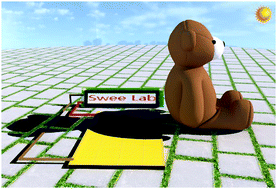Energy harvesting from shadow-effect†
Abstract
Shadows are everywhere. Not much engineering use has been found for shadows, and this ubiquitous effect is strenuously avoided in optoelectronic applications. In this work, we present a shadow-effect energy generator (SEG) that scavenges the illumination contrast that arises on the device from shadow castings, and generates a direct current, simply by placing a part of the generator in shadow. The shadow-effect mechanism is experimentally validated by Kelvin Probe Force Microscopy (KPFM). The SEG is capable of harvesting energy from illumination contrasts arising under weak ambient light. Without any optimization, our generator has a power density of 0.14 μW cm−2 under indoor conditions 0.001 sun, where shadows are persistent. Our SEG performs 200% better than that of commercial silicon solar cells under the effects of shadows. The harvested energy from our generator in the presence of shadows arising at a very low intensity (0.0025 sun) can drive an electronic watch (1.2 V). In addition, the SEG can serve as a self-powered sensor for monitoring moving objects by tracking the movement of shadows. With its cost-efficiency, simplicity and stability, our SEG offers a promising architecture to generate green energy from ambient conditions to power electronics, and as a part of a smart sensor systems, especially in buildings.

- This article is part of the themed collection: Energy & Environmental Science Cover Art


 Please wait while we load your content...
Please wait while we load your content...